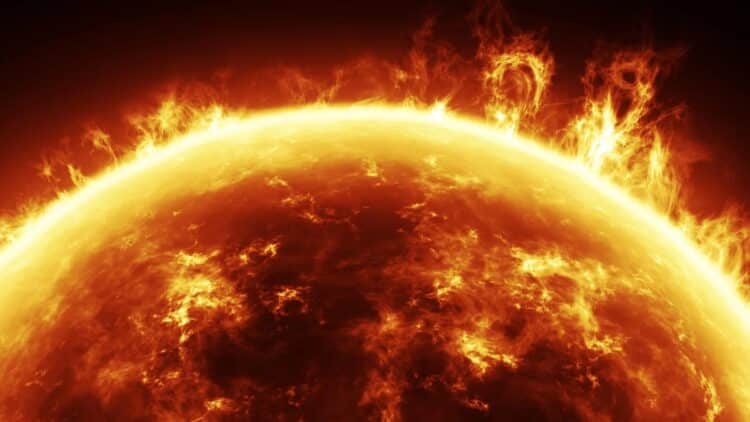Researchers at the University of Hawai’i’s Institute for Astronomy (IfA), led by Luke Benavitz and Jeffrey Reep, believe they have discovered the key to how rain forms on the Sun. Until now, it was believed that previous models of the solar atmosphere assumed that the distribution of various elements such as iron, silicon, and magnesium was relatively fixed. However, the new hypothesis suggests that the formation of this rain could depend on material flows driven by an uneven or changing distribution of elements within the corona.
To reach this conclusion, the researchers carried out simulations that allowed for variations in the distribution of elements, which coincides with what is actually seen on the Sun. In addition, they claim that the loss of energy through radiation is related to changes in the abundance of elements.
Solar rain
Explaining how solar rain forms has been a mystery for researchers, and they still do not know exactly how it forms. It is common to see it following violent solar flares, and the falls have been linked to the impulsive injection of heat that gives rise to coronal loops. However, a group of researchers from the Institute for Astronomy (IfA) at the University of Hawai’i, led by graduate student Luke Benavitz and astronomer Jeffrey Reep, have presented new findings that could shed some light on the matter.
Rain on the sun is not like rain on Earth, but is made of plasma, a gas with an electric charge of millions of degrees. As it falls, another normally invisible phenomenon occurs: magnetism. The electric charge present in the plasma allows the sun’s magnetic fields and loops to be traced, forming flux arcs.
New findings
With new research, experts are raising the possibility that solar rain, which has been a mystery until now, could depend on changes in the abundance of elements that influence energy loss through radiation.
- Increased radiation: Peaks in radiation cause temperatures to plummet at the top of coronal loops.
- Suction effect: This drop in temperature “sucks” more material through the loop.
- Runaway cooling: This triggers a runaway cooling effect, which is what results in coronal rain.
According to the team, changing elemental abundances are “critical to understanding plasma cooling” and can “directly cause coronal rain”.
Simulation
According to Benavitz, “Currently, models assume that the distribution of various elements in the corona is constant across space and time, which is clearly not the case.” The new theories are the result of simulations carried out by this group of researchers, which, unlike previous ones, allowed for variations in the distribution of elements. In these simulations, coronal rains began to condense in 35 minutes, whereas previous models needed hours or even days of heating to explain coronal rain. “It’s exciting to see that when we allow elements such as iron to change over time, the models finally match what we actually observe on the Sun. It brings physics to life in a way that feels real,” says Benavitz.
Future implications
These new findings suggest that other mechanisms are involved and that changes in the abundance of elements “are critical to understanding plasma cooling in the solar atmosphere and, as we have shown, can directly cause coronal rain”. According to Reep, “This discovery is important because it helps us understand how the Sun really works. We may have to go back to the drawing board on coronal heating, so there is a lot of exciting new work to be done”.
